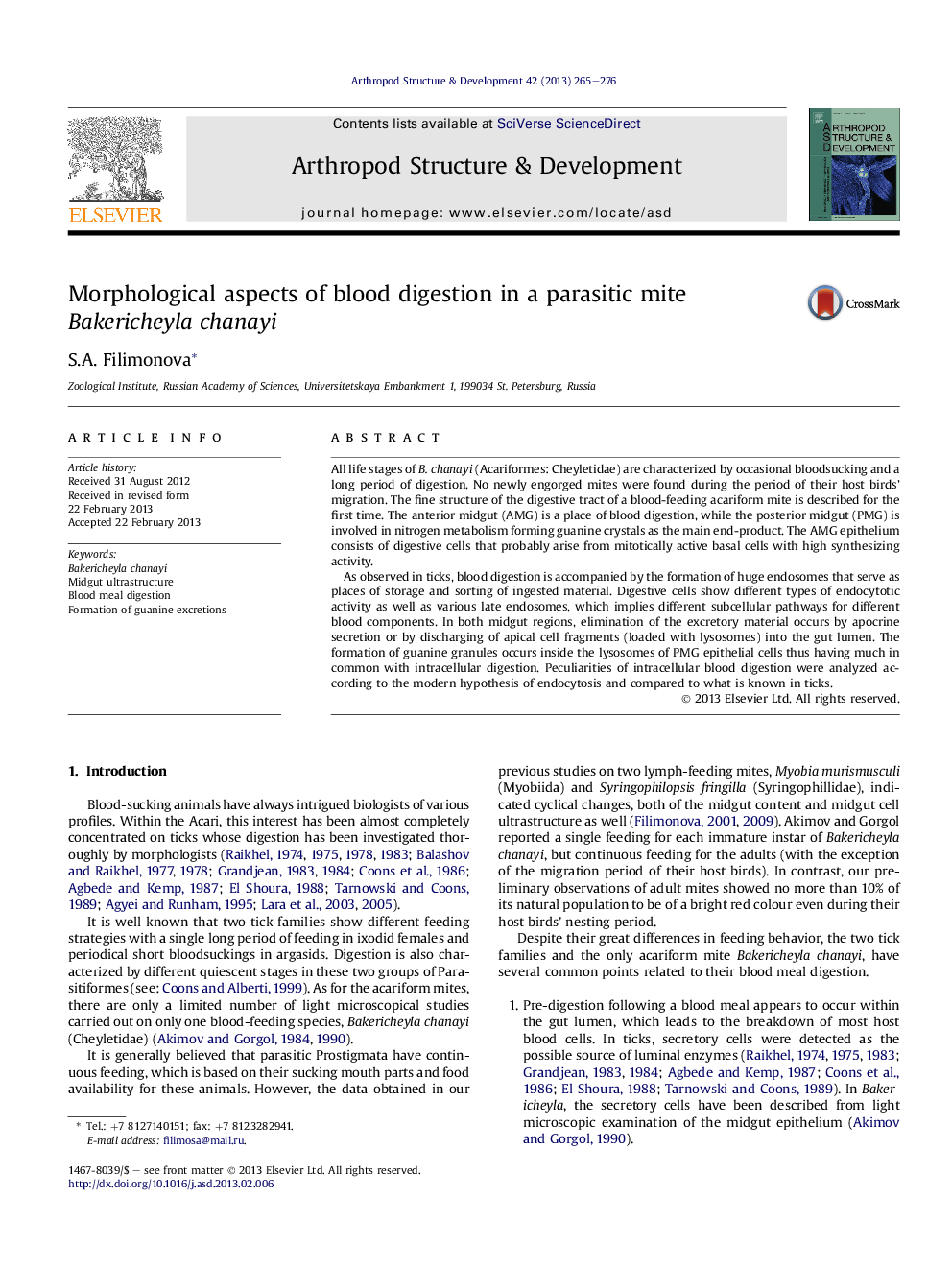| Article ID | Journal | Published Year | Pages | File Type |
|---|---|---|---|---|
| 2778729 | Arthropod Structure & Development | 2013 | 12 Pages |
•The fine structure of the digestive tract in cheyletid mites (Acariformes: Cheyletidae) is available for the first time.•Large early endosomes are of the sorting type and similar to those of the tick midgut.•Different types of late endosomes point to subcellular segregation of blood components.•Guanine granules are formed inside the epithelial cells of the excretory organ.
All life stages of B. chanayi (Acariformes: Cheyletidae) are characterized by occasional bloodsucking and a long period of digestion. No newly engorged mites were found during the period of their host birds' migration. The fine structure of the digestive tract of a blood-feeding acariform mite is described for the first time. The anterior midgut (AMG) is a place of blood digestion, while the posterior midgut (PMG) is involved in nitrogen metabolism forming guanine crystals as the main end-product. The AMG epithelium consists of digestive cells that probably arise from mitotically active basal cells with high synthesizing activity.As observed in ticks, blood digestion is accompanied by the formation of huge endosomes that serve as places of storage and sorting of ingested material. Digestive cells show different types of endocytotic activity as well as various late endosomes, which implies different subcellular pathways for different blood components. In both midgut regions, elimination of the excretory material occurs by apocrine secretion or by discharging of apical cell fragments (loaded with lysosomes) into the gut lumen. The formation of guanine granules occurs inside the lysosomes of PMG epithelial cells thus having much in common with intracellular digestion. Peculiarities of intracellular blood digestion were analyzed according to the modern hypothesis of endocytosis and compared to what is known in ticks.
